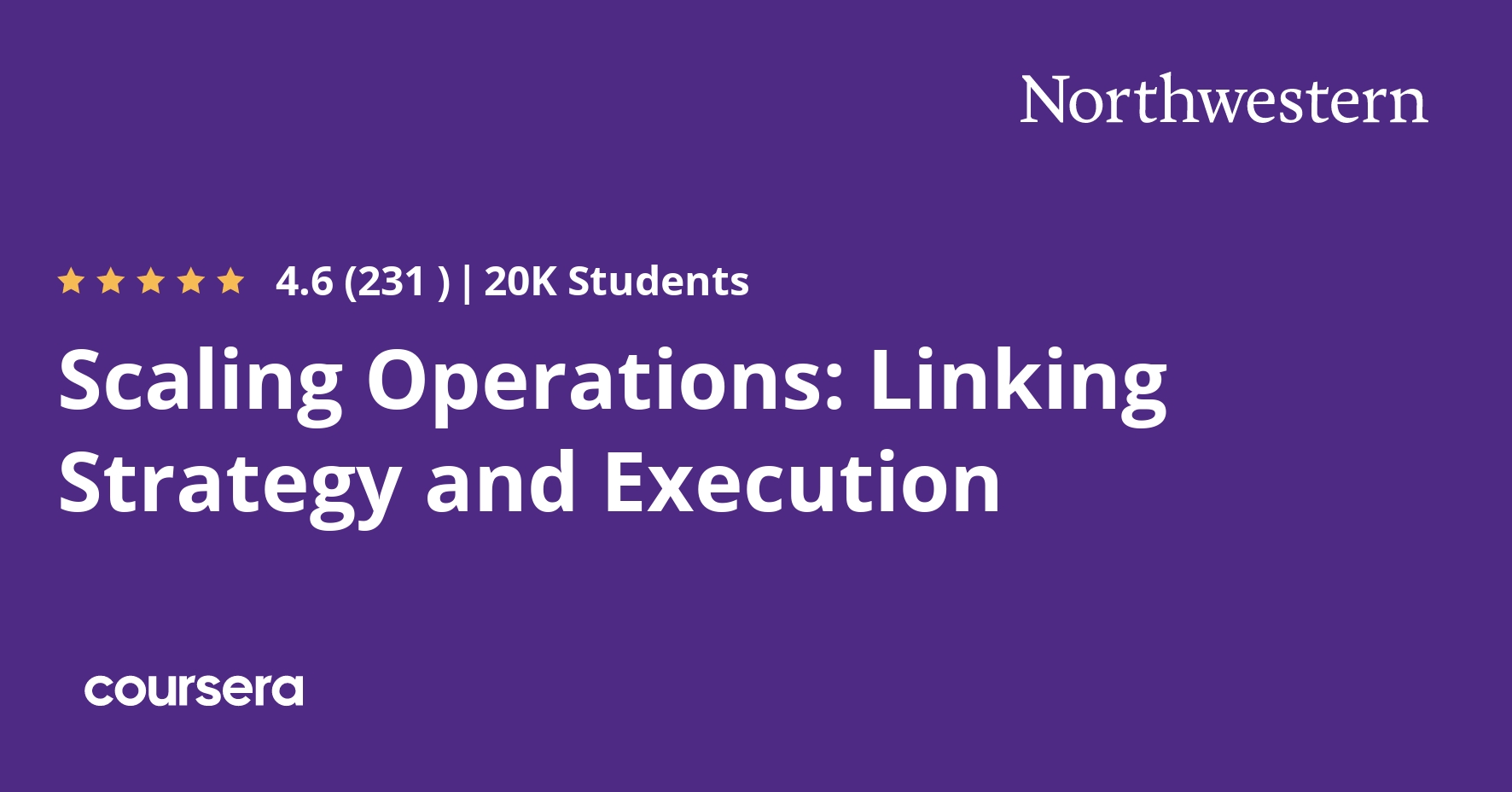Description
Over the past several decades, operations strategy has played an increasingly important role in business’ success. In this course, we will equip you with concepts and tools to build operations in a way that not only supports your competitive strategy, but also allows you to create new opportunities in the market place.
Scaling operations: Linking strategy and execution is a five-week course dedicated to making strategic decisions that are grounded in operational reality. Together, we will study how to build and evaluate the “operating system” of the firm to maximize value. This involves tailoring the firm’s operational competencies, assets, and processes to a specific business strategy.
Each week, we’ll explore case studies, engage in discussions and examine realistic data. Thanks to our data-driven approach, you’ll be able to implement your learning directly into practice. At the end of this course, you’ll be ready to build an effective, actionable plan to scale your department or organization.
What you will learn
The VCAP Framework
We start by explaining the concepts of operating systems and operations strategy. Then we introduce the main “VCAP” framework, which connects the key components of operations strategy and identifies three main views to analyze it. The module also describes the key decisions related to operations strategy. Several examples illustrate the impact of operations strategy and the importance of tailoring to increase value and alignment.
Value Creation and Operations: The Investor View
We start by reviewing the main idea of using operations to create value (and the VCAP framework). We briefly discuss the key questions and introduce the main firm we are going to use (the Mafia restaurant chain). We discuss the key idea of measuring financial return (EVA and ROIC). Then we introduce the main tool, the ROIC tree. We apply the ROIC tree to the firm and discuss the steps: constructing the tree, identifying metrics, assessing impact (sensitivity analysis), building a growth plan and communicating the narrative.
Capabilities and Competition: Defensibility and Trade-offs
Module 1 introduced the capability view of operations as the natural link between competitive strategy and operations. In this module we will investigate this link in greater depth and use the capability view to assess the competitive risk the firm faces. A good operations strategy clearly stipulates which capabilities are critical and which are of secondary importance. One can’t have it all: operational capabilities exhibit trade-offs and superior performance requires making choices. But where do these trade-offs come from and how can operations shape them to our competitive advantage? That is the subject of this module. We will outline the main challenge; develop the framework, and the use a simple case to illustrate it.
Process Strategy: Strategic Sourcing
In the previous modules, we introduced the VCAP framework for operations strategy and studied value and capabilities. We learned how to invest assets in the face of uncertain demand. Now we turn our attention to structuring operational processes. In this module, we will analyze two essential components of operations strategy: the questions of who should perform an activity or process in the value chain, and how we should manage the supply relationship.








